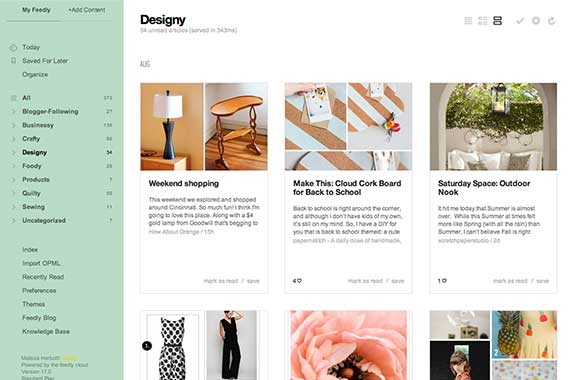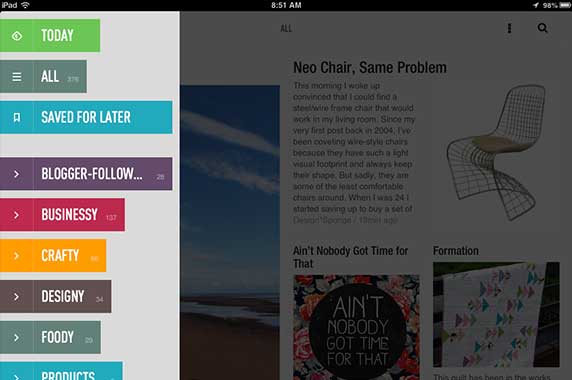Since Google Reader shut down in July, its loyal users were left to find a alternative to keep up with their RSS feeds. Making the switch to a new “reader” can be a chore, but luckily there are several great choices to pick from, even some with noteworthy improvements. In case you’ve never used an RSS reader, now’s a good time to learn about these helpful tools for keeping up-to-date on all your favorite blogs and news feeds.
RSS (Really Simple Syndication) is a system that lets news sources and blogs send out updates for users to follow in one standardized format. Using an RSS reader is like having your own personal online magazine where you can browse what’s new at your favorite sites, instead of visiting each individually. Google Reader was dominant in the category until the search giant issued its unpopular decision to kill the service. Just to name a few, Digg Reader, Newsblur and Feedly are some of the most talked-about heirs to the Google Reader throne.
So what do you need a newsreader for, anyway? Despite what the Google brain trust might think, a reliable RSS reader offers a lot of awesome benefits. Aside from keeping all your go-to sites nicely organized in one central location to peruse over your morning coffee, some of the best advantages include:
- It’s easy to mark an interesting story for safe keeping to read later, as opposed to struggling to track down what site had that one cool thing you remember seeing.
- A newsreader makes a helpful complement to your social media experience, since you can isolate your favorite news topics from the constant hustle bustle on Facebook and Twitter. Plus you can share RSS finds on your networks with a simple click.
- You can seamlessly sync your newsreader across different platforms and log in via browser plugins and mobile apps. Bookmark a story on your work computer at lunch, then read it at home on your tablet.
- Have it your way: Many newsreaders are customizable by category, date, and even layout and color themes.
- And this is a huge bonus: cut out all those ads and distracting miscellaneous clutter! Your newsreader strips down the latest posts to what you actually want to see, banishing the obnoxious pop-ups and banners.
Personally, I’m a big fan of using Feedly. Why, you ask? Well, as a designer, function is not the only thing important to me – visual appeal is too! Feedly does both of these well. It brings order and imagery to what could otherwise be just a bunch of plain text. I follow lots of design inspired blogs, so I like having the thumbnail images that Feedly delivers. By creating a clean and simple structure combining nice typography, images, icons, and lots of white space. Feedly offers its users several viewing options as well, all based on a minimalist grid, including title-only lists, a magazine-style preview, and an image-driven Pinterest-style layout that’s a pleasure to browse.

Many newsreaders are customizable by category, date, and even layout and color themes. Here’s a look at the Feedly interface from my desktop.

Browse by category on your iPad or read posts you’ve tagged “for later.”
So what’s your favorite RSS reader? Let us know your preferences, and don’t forget to add Signal to your feed to keep up-to-date with our latest happenings.






